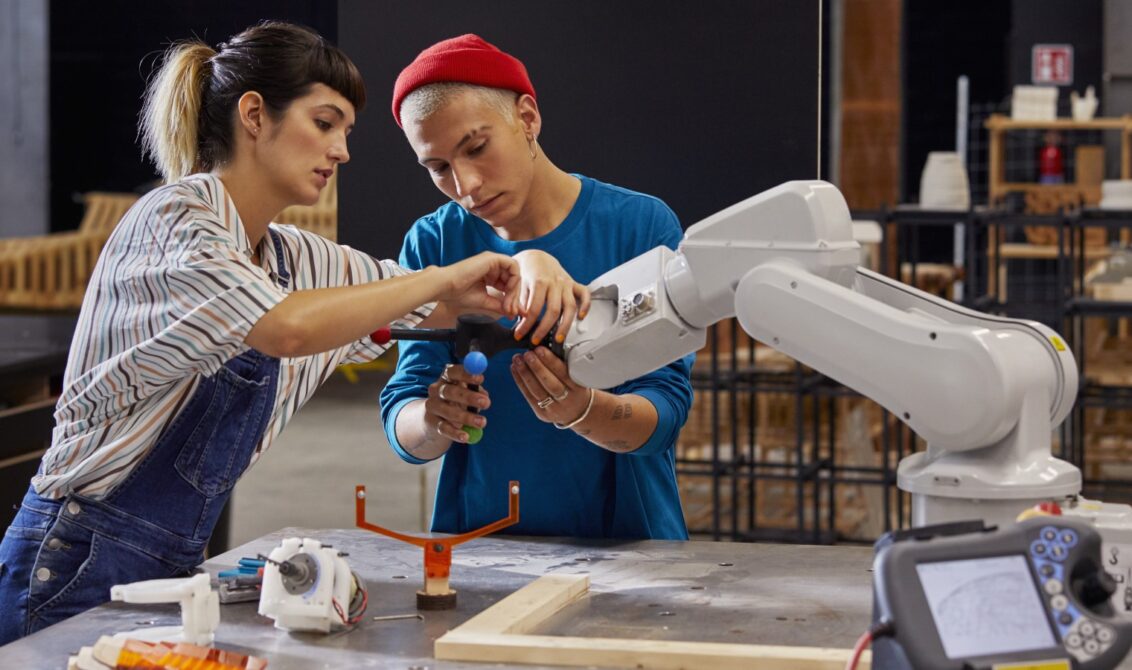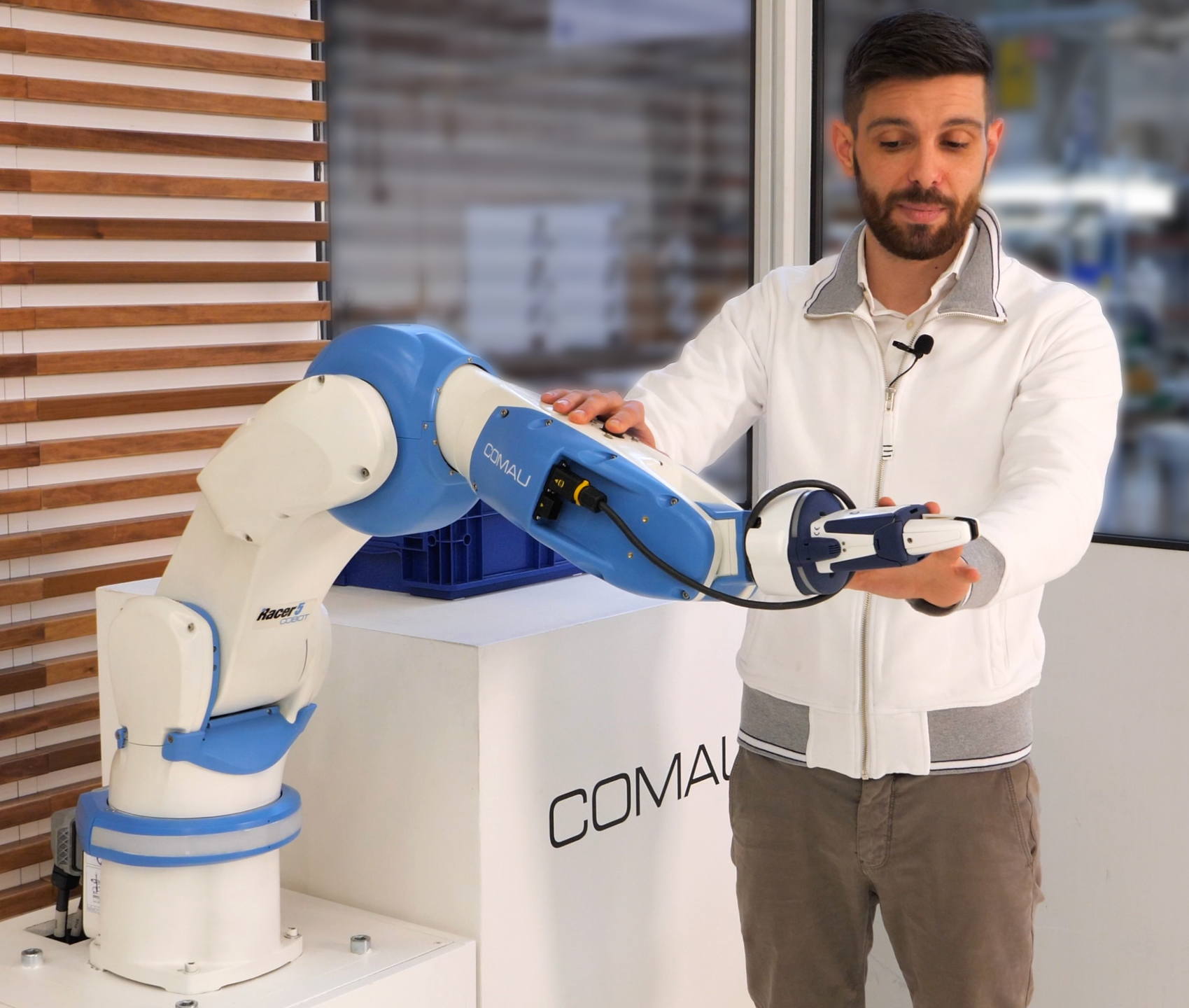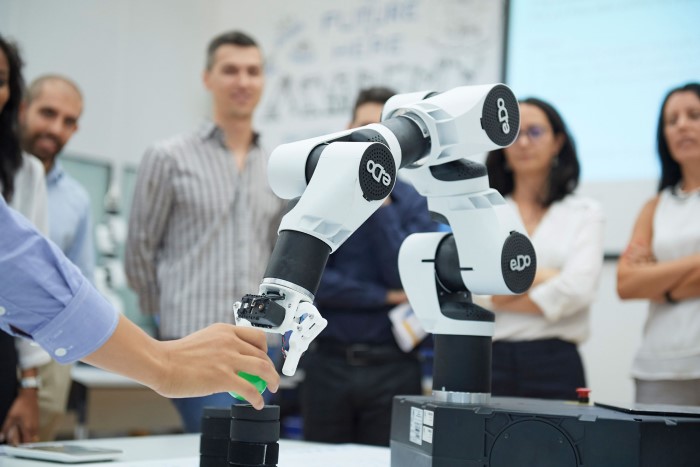
The global market for robotics is expanding continuously. In this article, Nicoletta Beretta shares insights into the impact this will have on global industry.
According to the World Robotics 2020 Industrial Robots report published by the International Federation of Robotics (IFR), by the end of last year some 2.7 million robots were operating in factories around the world, 12% more than in 2019 when 373,000 new robots were sold and installed during that year.
Today, industrial automation, driven by the Fourth Industrial Revolution, plays a decisive role in modern production plants where it is redefining work processes, operator interaction and skill levels. A recent report published by the McKinsey Institute, The future of work after COVID-19, highlights how working restrictions imposed by the recent pandemic have played a significant role in pushing companies to invest more and more in autonomous robotic plants, smart digital systems and Industrial Internet of Things (IIoT) solutions in order to avoid future production outages and improve safety in the workplace.
To help industries navigate the smart factory and robotic technology, Pearson and Comau – the global leader in industrial automation and robotics – have jointly developed a unique specialist course addressing these issues: a BTEC International Level 3 certificate in Robotic Operations. This new course provides learners with a focused and specialist introduction to industrial automation and concepts in engineering robotics. Covering the operation and programming of robots and the development and management of digital and enabling technologies and conveying practical notions of immediate relevance to finding work in Industry 4.0 manufacturing.
If robots are transforming the global industry, production methods will not be the only things to change. A clear understanding of the main trends now characterising the manufacturing sector and how they will shape the future will be essential to the success of the ‘factory of the future’. Let us examine some of these trends:
1. More robots – yes, but in support of human operators
Making more extensive use of robots in industry is not intended as a way to reduce human resources while increasing the number of machines. On the contrary, the aim is to automate repetitive and heavy work, leaving human operators free to carry out lighter and more specialist tasks. Thanks to cobots, workers can interact more effectively with industrial systems and make factories safer and a more efficient place to work. The new Racer-5 COBOT from Comau is an excellent example of this type of robot. It is designed to work quickly and accurately even in tight spaces and it can switch automatically from industrial production mode to collaborative mode whenever an operator approaches it.
This means not only that we shall see more efficient solutions being introduced in factories in the near future, but also that personnel will require new competences and skill upgrades to work with them. Current professionals and young people seeking employment in industry will have to acquire or improve soft skills: the analysis of new operating contexts, problem solving, and the ability to identify new production strategies that can optimise conventional plants by integrating enabling and digital technologies.
2. The age of the ‘smart’ factory
Latest generation robots are easy to install and program, but above all are able to dialogue with other production line systems and with cloud-connected central supervision systems. Thanks to sensors, advanced vision systems and IoT systems that collect status and process information, Industry 4.0 robots are ‘smart’ machines for all intents and purposes. This technological progress is facilitated by greater integration of mechanical systems, software solutions and enabling technologies.
One such technology is artificial intelligence, which gives a robot human-like functionality and analytical capabilities, and improves the accuracy and performance of machines in industrial applications. Above all, it allows robotic systems to be remotely monitored, failures prevented, and production quality and work flow improved by collecting and analysing data. The in.Grid IIoT platform designed by Comau is a good example of this: it provides predictive maintenance and improves the efficiency of operations planning.
For all these reasons, the future use of robotics will require personnel to have greater skills in ICT, data analysis, artificial intelligence and digital transformation.
3. A flexible, ergonomic and safe workplace
Automation is redesigning the workplace and making factories more sustainable and efficient. Collaborative robotics helps create ‘open’ production lines that no longer need access barriers. This optimises industrial layouts, reduces the occupation of floorspace and cuts the cost of machine installation. Automatic guided vehicles (AGVs) improve factory logistics: these extremely flexible robotic systems are remotely programmed and operated using digital technologies to ensure the smart control of intra-logistic flows in close cooperation with the operator. One such AGV is the Comau Agile1500, a fully automated mobile robot with a payload of up to 1.5 tons, designed to optimise all kinds of logistic flow. To help reduce the fatigue and physical stress associated with manual tasks, workers can also adopt wearable robotic solutions like Comau MATE-XT, an exoskeleton for use in all industrial contexts, both indoors and out.
Industry 4.0 is becoming more and more human-oriented and this means it will be imperative to train designers and developers to create systems that can optimise industrial operations while simultaneously improving quality, operator ergonomics and safety.
4. Robotics and new business models
Thanks to collaborative robots and smart, interconnected robotic solutions, companies can manage more flexible and versatile processes. Cobots can operate in close proximity to humans in open spaces; they are also easier to integrate in production lines, faster and more agile in different applications. This is the case with Comau AURA, a unique, high-payload collaborative robot that can lift up to 170 kilograms and has an extended reach of 2.8m. Thanks to sensors, it can operate in complete safety in close proximity to operators without requiring barriers, eliminating the need for workers to perform heavy, repetitive industrial actions. The latest automation solutions allow companies to experiment with completely new business models and offer the manufacturing industry a chance to diversify activities and extend product ranges.
Industry 4.0, however, will impose a need for technical specialists in the field project management and digital transformation at a technical, planning and operational levels to exploit these new technologies.
5. New robots for new sectors
Technological innovations in man-machine collaboration and the digitalisation of production have allowed robots to find applications in unexpected market segments. In the future, we shall see automation solutions introduced or expanded even in non-manufacturing segments such as the medical, social care and education sectors.
Educational robots, for example, already assist with the teaching of school curriculum subjects like STEM (Science, Technology, Engineering and Mathematics), as well as extra-curricular subjects like coding, robotics and work culture, and so-called soft skills (teamwork, problem solving, etc.). They offer an innovative and effective approach to learning for a truly diverse public, from primary school to university students and industry professionals. With the world of education in mind, Comau has developed e.DO, a small, modular, open source, 6-axis robot that allows teachers to deliver original and stimulating lessons based on an intuitive, interactive and enjoyable teaching method.
This is only one of the many contexts in which robotics is destined to revolutionise our way of living and working: anybody designing new automation systems must therefore learn to interpret rapid and continuous market changes, to anticipate manufacturing trends, and to imagine new industrial applications.
Further reading
Learn more about the collaboration between Comau and Pearson.
Register for the certification course for BTEC International Level 3 Specialist in Robotic Operations.
About Comau
Comau is a leading company in the industrial automation field, at a global level. Combining innovative engineering solutions with easy to use, open automation and enabling technologies, Comau helps companies of all sizes – and across a wide range of industrial segments – leverage the full potential of digital manufacturing. Comau’s competency stems from over 45 years of field proven-experience and a strong presence within every major industrial country.
Sign up to receive our blog updates
Like what you read and want to receive more articles like this direct to your inbox? Subscribe to our blog and we’ll send you a fortnightly digest of the blog posts you may have missed, plus links to free resources to support your teaching and learning.




